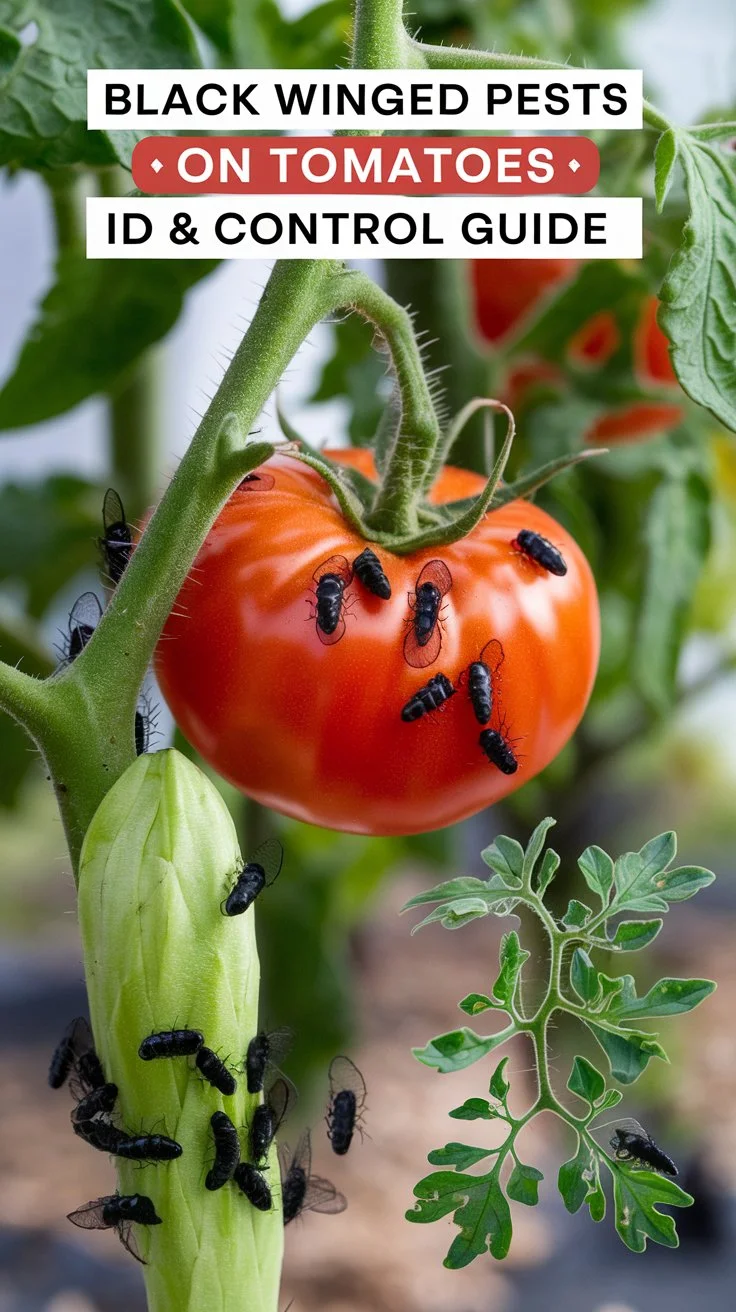Learn to identify and control small black winged insects on your tomato plants in 2024. Discover expert tips for protecting your tomato harvest from common flying pests.
Small black winged insects on tomato plants are often signs of common garden pests like whiteflies, aphids, or flea beetles that can significantly impact your tomato harvest. These prevalent garden pests require prompt identification and management to protect your plants. Understanding their lifecycle and implementing effective control measures is crucial for both home gardeners and commercial growers in 2024.
Hello, I’m Ashley Scott, a horticulturist with over 15 years of experience in ornamental plant cultivation and pest management. Today, I’m excited to share my knowledge about identifying and controlling small black winged insects that commonly affect tomato plants, a persistent challenge that many gardeners face in their vegetable gardens.
Understanding Common Black Winged Pests

According to the University of California IPM Program, several types of small black winged insects commonly attack tomato plants:
Whiteflies
- Actually appear black in juvenile stages
- Tiny, moth-like insects about 1/16 inch long
- Congregate on leaf undersides
- Leave sticky honeydew residue
The Penn State Extension provides detailed identification guides for different whitefly species affecting tomatoes.
Flea Beetles
- Tiny, shiny black beetles
- Powerful jumping ability
- Create small round holes in leaves
- Most active in early spring
For more information about flea beetle management, visit the Cornell University Vegetable Program.
Black Aphids
- Clusters of small, dark insects
- Often found on new growth
- Can be winged or wingless
- Cause leaf curling and distortion
Learn more about aphid identification and control from Texas A&M AgriLife Extension.
Control Methods
Cultural Controls
The National Sustainable Agriculture Information Service recommends these preventive measures:
- Prevention
- Use row covers
- Maintain plant spacing
- Remove affected leaves
- Keep garden clean
Organic Solutions
According to Oregon State University Extension, effective organic controls include:
- Natural Predators
- Ladybugs
- Lacewings
- Parasitic wasps
- Praying mantises
For more about beneficial insects, visit the Xerces Society.
Prevention Strategies
The Royal Horticultural Society suggests these preventive measures:
Garden Maintenance
- Regular inspection
- Proper watering practices
- Adequate air circulation
- Weed control
Learn more about integrated pest management from the USDA National Institute of Food and Agriculture.
Seasonal Management
Spring
- Monitor early season activity
- Install preventive barriers
- Begin companion planting
- Apply preventive treatments
Summer
- Increase monitoring frequency
- Maintain natural predator populations
- Adjust watering practices
- Remove affected plant parts
Fall
- Clean up garden debris
- Remove infected plants
- Prepare soil for next season
- Plan rotation strategy
Organic Garden Integration
Beneficial Insects
- Attract natural predators
- Provide habitat
- Maintain diversity
- Avoid broad-spectrum pesticides
Soil Health
- Build organic matter
- Maintain proper pH
- Encourage beneficial microbes
- Use quality compost
Advanced Management Techniques
Integrated Pest Management (IPM)
- Monitoring
- Regular inspections
- Population tracking
- Damage assessment
- Weather monitoring
- Threshold Levels
- Economic injury levels
- Treatment timing
- Risk assessment
- Cost-benefit analysis
Troubleshooting Common Issues
When to Act
- Population explosion
- Severe leaf damage
- Plant stress symptoms
- Disease transmission
Treatment Failure
- Resistance development
- Incorrect identification
- Poor timing
- Environmental factors
Future Prevention
Garden Planning
- Crop rotation
- Resistant varieties
- Timing adjustments
- Buffer zones
Long-term Strategy
- Soil improvement
- Biodiversity increase
- Habitat management
- Record keeping
Successfully managing small black winged insects on tomato plants requires a combination of vigilant monitoring, proper identification, and integrated control methods. By understanding these pests and implementing appropriate management strategies, gardeners can protect their tomato crops and maintain healthy, productive plants. Remember that prevention and early intervention are key to controlling these common garden pests effectively.
For more gardening tips and plant care guides, visit usagardenhub.com



